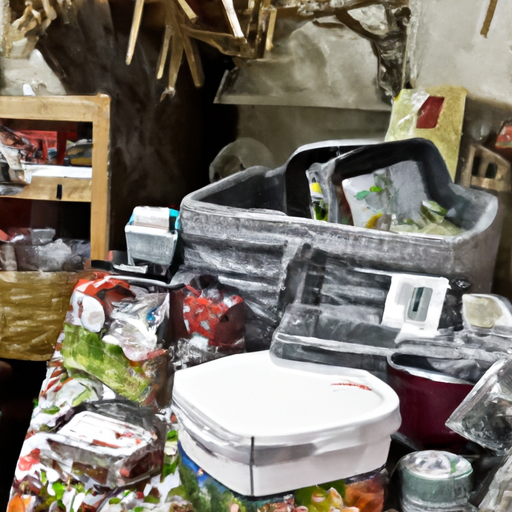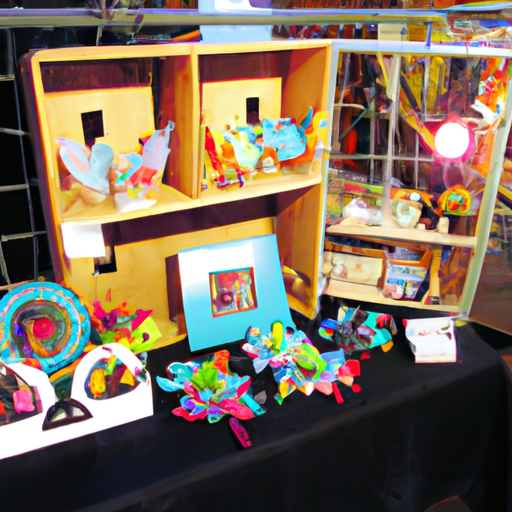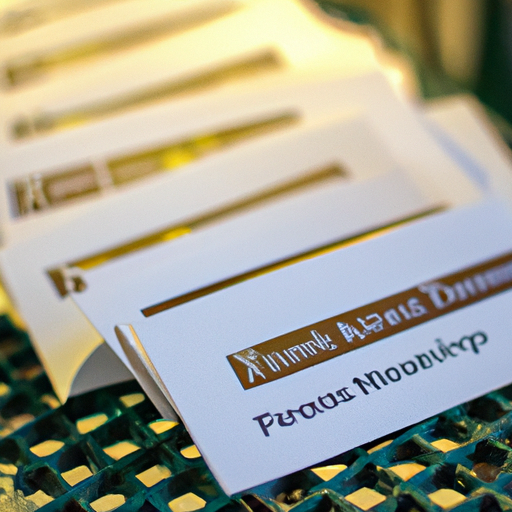In the video titled “Craft Show Tips: How to Prep, Set up, and Take Down for a Craft Fair,” the creator, KraftingWithKandace, shares their personal experience and provides valuable information for anyone interested in participating in a craft fair. They cover a range of topics, including choosing the right show, preparing items and inventory, pricing strategies, booth set up, customer interaction, and more. The video includes timestamps for easy navigation to specific sections and offers affiliate links to craft-related products. KraftingWithKandace encourages viewers to join their Facebook group and support their channel by buying them a coffee.
Welcome back to the video, where KraftingWithKandace shares their expertise on prepping, setting up, and taking down for craft fairs. With their personal experience and practical tips, they guide you through each step of the process, from selecting the right show to packing your vehicle the night before. They emphasize considering the match between your products and the event’s vibe, pricing range, and the importance of creating an attractive booth display. KraftingWithKandace also delves into day-of tips, alternative payment options, customer interaction, and the significance of observing customer behavior. Join their Facebook group, show your support, and grab a coffee while learning invaluable craft show tips!
Choosing a Craft Show
When it comes to participating in craft shows, one of the first decisions you’ll need to make is choosing the right show for you. Not all craft shows are created equal, and it’s important to select one that aligns with your style, products, and target audience.
Type of Craft Show
Craft shows come in all shapes and sizes, so it’s important to consider what type of show will best showcase your products. Some craft shows may focus on a specific theme or niche, while others may be more general and cater to a variety of crafters. Take some time to research different shows in your area and determine which ones are the most suitable for your craft items.
Location
The location of the craft show is another important factor to consider. Think about the demographics of the area and whether it aligns with your target audience. For example, if your products are more geared towards young adults, a craft show located in a popular city center or hip neighborhood might be a good fit. On the other hand, if your products are more traditional or vintage-inspired, a country or holiday-themed craft show might be more appropriate.
Target Audience
Understanding your target audience is crucial when choosing a craft show. Consider who your products appeal to and where you are most likely to find your ideal customers. Research the demographics of the attendees at different craft shows and determine which ones are the best match for your target market. Participating in shows that attract your ideal customers will greatly increase your chances of making sales and growing your customer base.
Preparing Items and Inventory
Once you’ve chosen the craft shows you want to participate in, it’s time to start preparing your inventory. Having a well-stocked and diverse range of items is key to attracting customers and maximizing your sales opportunities.
Inventory Assessment
Before the craft show, take some time to assess your inventory. Consider which items are currently in demand and which ones may need to be restocked. Take note of any popular or best-selling items and make sure to have an ample supply of those on hand. Additionally, consider any seasonal or holiday-themed items that may be relevant to the time of the craft show.
Stocking Up on Supplies
In addition to your finished products, make sure to stock up on any necessary supplies for your craft booth. This might include packaging materials, price tags, business cards, and any other tools or accessories you may need. It’s always better to be over-prepared than under-prepared, so make a checklist and ensure you have everything you need before the craft show.
Creating Holiday-Themed Items
If the craft show aligns with a specific holiday or season, consider creating some holiday-themed items to attract customers. Whether it’s Christmas ornaments, Halloween decorations, or Valentine’s Day gifts, offering seasonal products can help you stand out and increase your sales potential. Get creative and think about how you can incorporate different holidays into your craft items to appeal to a wider range of customers.
Setting Pricing Range
Pricing your items properly is crucial for success at a craft show. It’s important to offer a range of price points to cater to different customers and their budgets. Finding the right balance between profitability and affordability is key to maximizing your sales.
Different Price Points
When pricing your items, consider offering a variety of price points. This allows customers with different budgets to find something within their price range. Have a mix of lower-priced items that serve as impulse buys, as well as higher-priced items that cater to customers looking for something more special or unique.
Pricing Items as They are Completed
A helpful strategy is to price your items as you complete them. This ensures that your pricing is consistent and you don’t have to scramble to price everything right before the craft show. Have a system in place, whether it’s using price tags, stickers, or any other method that works for you. Make sure the pricing is clear and visible to customers, so they know exactly how much each item costs.
Using Business Cards with Pricing Information
To make pricing even more convenient for customers, consider using business cards with pricing information on the back. This way, customers can easily take a card with them if they’re interested in purchasing but not ready to make a decision immediately. It also serves as a reminder of your products and contact information, potentially leading to future sales or custom orders.
Booth Setup
A well-thought-out booth setup is essential for attracting customers and showcasing your craft items in the best possible way. Pay attention to the smallest details and create a professional and visually appealing display that draws people in.
Basic Equipment
Start by gathering the basic equipment you’ll need for your craft booth. This may include folding tables, chairs, storage containers, and any other items necessary for setting up your space. Make a checklist and ensure you have everything you need before the craft show.
Tablecloths and Shelves
Tablecloths are an easy way to elevate the look of your booth and create a cohesive and professional appearance. Choose tablecloths that complement your branding and product style. Additionally, consider adding shelves or display units to your booth setup to create vertical elements and make better use of the space. This allows you to showcase more items and utilize the booth area more efficiently.
Creating Height and Visual Appeal
Creating height in your booth display adds visual interest and draws the eye of customers. Use risers, crates, or other props to elevate your products and create different levels within your booth. This not only makes your booth more visually appealing but also allows customers to see your products from different angles and perspectives. Experiment with different arrangements and layouts to find what works best for showcasing your craft items.
Interacting with Customers
Interacting with customers in a friendly and welcoming manner is key to building connections, making sales, and creating a positive experience at craft shows. Putting effort into engaging with potential customers can greatly impact your success at the event.
Friendly Approach
Approach customers with a warm and friendly demeanor. Greet them with a smile and be attentive to their needs. Be prepared to answer any questions they may have about your products, and always be courteous and patient.
Providing Compliments
Offering compliments to customers can help break the ice and create a positive atmosphere. If a customer is admiring one of your craft items, take a moment to compliment their taste or style. This simple gesture can create a connection and make them feel valued, increasing the chances of making a sale or even sparking word-of-mouth recommendations.
Offering Bags and Business Cards
Make it easy for customers to carry their purchases by offering bags or packaging. This not only adds convenience for the customer but also serves as free advertising, as they will be walking around the event with your branded bag. Additionally, have business cards readily available for customers to take with them. This allows them to easily find you again in the future or refer others to your craft business.
Preparing for the Craft Show
Preparing for a craft show involves careful planning and organization. Take the time to create a checklist, gather necessary items, and ensure everything is in order before the event begins.
Creating a Checklist
A checklist is essential for staying organized and ensuring you have everything you need for the craft show. Make a comprehensive list of all the items you’ll need, from inventory to booth setup materials. As you gather each item, check it off the list to ensure nothing is overlooked.
Preparing Adequate Change
Make sure you have enough change to provide customers with the correct amount when making purchases. It’s important to have a variety of bills and coins on hand to accommodate different purchase amounts. Consider using a cash register, cash box, or even a fanny pack or apron with pockets to store and organize your change.
Keeping the Booth Tidy and Organized
A clean and organized booth not only looks more appealing to customers but also makes it easier for them to browse and find what they’re looking for. Take the time to tidy up throughout the day, restock as needed, and keep your booth visually appealing. Dedicate a specific area to store extra inventory and supplies so that your booth remains clutter-free.
Payment Options
Offering convenient payment options is essential in today’s digital world. Moving beyond cash-only transactions can greatly increase your sales potential and customer satisfaction.
Using QR Codes
Consider using QR codes to allow customers to make mobile payments. This can include services like Venmo, PayPal, or other popular payment platforms. Display the QR code prominently in your booth, along with instructions on how to use it. This provides a convenient and contactless payment option for customers, especially those who prefer not to carry cash.
Accepting Mobile Payments
In addition to QR codes, make sure you have the necessary equipment or apps to accept mobile payments. This may involve having a card reader or mobile payment app on your phone or tablet. Offering multiple payment options, including credit cards and mobile payment apps, ensures that customers can choose their preferred method of payment.
Analyzing Sales and Customer Preferences
Understanding sales patterns and customer preferences is essential for growing your craft business. Paying attention to customer behavior and tracking sales can provide valuable insights and help you make data-driven business decisions.
Observing Customer Behavior
Observe how customers interact with your products and booth. Take note of which items attract the most attention, which ones customers ask about, and which ones generate the most sales. Pay attention to customer comments, feedback, and body language to gain insights into their preferences and interests. This information can help you tailor your inventory and marketing strategies to better meet their needs.
Tracking Sales
Keep a record of your sales throughout the craft show. This can be as simple as tallying up the number of items sold or using a more detailed tracking system. By recording which items sell, the quantity sold, and the price point, you can identify trends and patterns in your sales data. This information can guide your decision-making for future craft shows and help you optimize your inventory and pricing strategies.
Adapting and Improving
Based on your analysis of sales and customer preferences, make necessary adjustments to improve your craft business. If certain items are consistently popular, consider expanding your selection or offering variations of those products. If particular pricing ranges perform better than others, consider adjusting your price points accordingly. By continually adapting and improving, you can better cater to customer preferences and increase your sales potential.
Maximizing Sales Opportunities
To make the most of your time at a craft show, it’s important to maximize sales opportunities and capitalize on every chance to connect with customers.
Staying Until the End
No matter how slow sales may be throughout the day, it’s important to stay until the end of the craft show. Some of the best sales opportunities often happen towards the end as customers make their final purchases or revisit booths they were interested in earlier. By staying until the end, you increase your chances of making those last-minute sales.
Making Last-Minute Sales
As the end of the craft show approaches, be proactive in making last-minute sales. Offer discounts on certain items to entice customers to make a purchase or consider bundling items together for a special price. Use your interpersonal skills to engage with visitors and create a sense of urgency, making them feel like they would be missing out if they didn’t make a purchase.
Cleaning Up and Organizing
Once the craft show is over, take the time to clean up and organize your booth. This not only shows professionalism but also ensures that your craft items are protected and ready for the next event. Pack your items carefully and label your storage containers for easy access and inventory management. Taking care of these post-show tasks will make the transition to the next event smoother and more efficient.
Evaluating the Event
After each craft show, it’s important to evaluate its success and identify areas for improvement. Taking the time to reflect on your experience can help you refine your craft show strategies and set yourself up for future success.
Counting Cash
Counting the cash you earned during the craft show is an important step in evaluating its success. Calculate your total sales minus any expenses incurred to determine your profit for the event. Keep track of these numbers and compare them to previous craft shows to track your progress and identify trends.
Debriefing and Evaluation
Take the time to debrief and evaluate the craft show. Consider what went well, what challenges you faced, and what improvements could be made. Reflect on customer feedback, interactions, and sales patterns. Discuss your experience with fellow crafters or join craft show communities to gain insights and learn from others. This evaluation process will help you grow and improve for future craft shows.
Investing in Booth Setup
Based on your evaluation, determine if any improvements or investments need to be made in your booth setup. Consider feedback from customers or fellow crafters and identify any areas where your booth could be enhanced. This might involve purchasing additional display items, updating signage or branding, or improving the overall aesthetic of your booth. Investing in your booth setup shows professionalism and can greatly enhance the customer experience, leading to increased sales and customer satisfaction.
Craft shows are a great opportunity to showcase your craft items, connect with customers, and grow your craft business. By carefully choosing the right shows, preparing your inventory, setting the pricing range appropriately, creating an appealing booth setup, interacting with customers effectively, and evaluating your performance, you can make the most of your craft show experience and achieve success in selling your craft items. Good luck!



